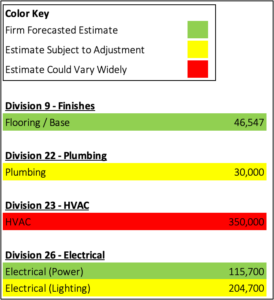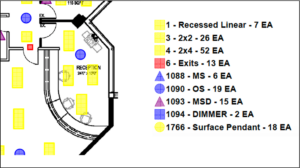
Accurate Construction Budgets Are Make-or-Break for Project Viability in Today’s Market
Uncertainty has become the only certainty in construction pricing. The traditional methods of estimating and budgeting are proving inadequate in a market where prices can fluctuate dramatically between concept and completion. This new reality demands a fundamental shift toward greater transparency and precision in how projects are priced from the earliest stages of development.
The Escalating Impact of Construction Costs
As construction prices continue to increase, the eventual cost occupies an increasingly significant role in the viability of every project and development opportunity. Making a proper analysis of costs early in the process has become critical to avoid wasting resources or proceeding with incorrect assumptions. Today’s construction environment presents unprecedented challenges for accurate pricing:
- The vast range of construction material choices and options available
- Market volatility driven by inflation and anticipated tariffs
- Labor constraints and supply chain disruptions
- Regulatory changes continuously alter compliance requirements and costs
The Hidden Components That Drive Costs
Beyond the visible elements of any construction project lie numerous systems that significantly impact the total price but are frequently overlooked during conceptual planning:
- Ceiling systems, open ceilings, acoustical considerations, decorative lighting
- Mechanical and electrical systems
- Building automation
- Security and access control
- Fire protection
- Site development requirements
Especially for concept pricing, when full drawings haven’t yet been developed, these “hidden” components need thorough research and consideration. They can dramatically impact the total project cost.
The Industry’s Pricing Dilemma
The construction industry faces a fundamental dilemma in pricing approaches. Many general contracting firms provide artificially low initial estimates to win bids or use a simple cost/square foot to create an estimate, creating a perception of value that rarely materializes. When the true costs inevitably emerge later in the project, clients face difficult decisions: scale back their vision, find additional funding, or abandon the project entirely.
Any contractor can take conceptual information and provide a price that is either so inflated the deal has no chance of succeeding, or low-ball a price that moves things forward but inevitably generates conflicts when reality sets in. Neither approach serves the long-term interests of projects nor instills trust in stakeholders.
Developing Accurate Conceptual Pricing: A Better Approach
So how is it possible to develop accurate, well-qualified conceptual pricing that will hold up over time and remain within an appropriate range of the final construction cost?
The answer lies in deploying experienced professionals to analyze all issues and develop estimates that have real value towards informing budgets long before documentation is complete. This approach includes:
- Thoroughly investigating and analyzing existing conditions
- Taking time to understand the client’s intent, including practicality, aesthetic, and functional requirements
- Engaging trusted subcontractors who can conceptualize the likely end-product and provide realistic current trade pricing
- Developing plans and narratives that communicate assumptions so designs can be checked against these guidelines as they develop—the only reliable way to keep a project on budget
- Considering costs outside of construction that need to be addressed in the total project budget
- Collaborating effectively with design teams to ensure what is drawn aligns with what was priced
The KasCon Approach: Transparency as a Core Value
At KasCon, we’ve built our estimating practices around the principle of transparency. Our process includes:
1. Collaborative Planning: Working closely with clients to define assumptions and create solid pricing that informs decision-making.
2. Detailed Breakdowns: Providing comprehensive, line-item breakdowns of all costs so clients see exactly where their money is going.
3. Uncovering Hidden Costs: Researching and accounting for the less obvious components that significantly impact total project costs.
4. Visual Uncertainty Communication: We’ve developed a unique color-coding system that clearly indicates the level of certainty for each line item in our estimates (example on right). Green items represent fixed, highly reliable costs; yellow indicates moderate variability; and red highlights components with significant potential for change due to external factors. This visual approach allows stakeholders to immediately understand which aspects of the estimate carry more risk, facilitating better decision-making.
5. Component-Level Specificity: Rather than relying on broad allowances or industry averages, we create detailed component breakdowns even at the conceptual stage.
For example, our lighting estimates don’t simply apply a per-square-foot allowance.
 Instead, we create preliminary lighting layouts based on the intended use and space requirements, then count actual fixture quantities to provide far more accurate pricing (example on left).
Instead, we create preliminary lighting layouts based on the intended use and space requirements, then count actual fixture quantities to provide far more accurate pricing (example on left).
We believe that most clients want transparency and accuracy upfront and follow through when it comes time to contract for the work—no surprises and no wasted time chasing unrealistic figures.
The Bottom Line
The most successful projects begin with accurate, transparent pricing that builds trust among all stakeholders. When considering your next construction project, prioritize partners who value transparency, accuracy, and collaborative problem-solving. The initial price tag may appear higher, but the outcome will likely result in a more successful, more cost-effective project.



